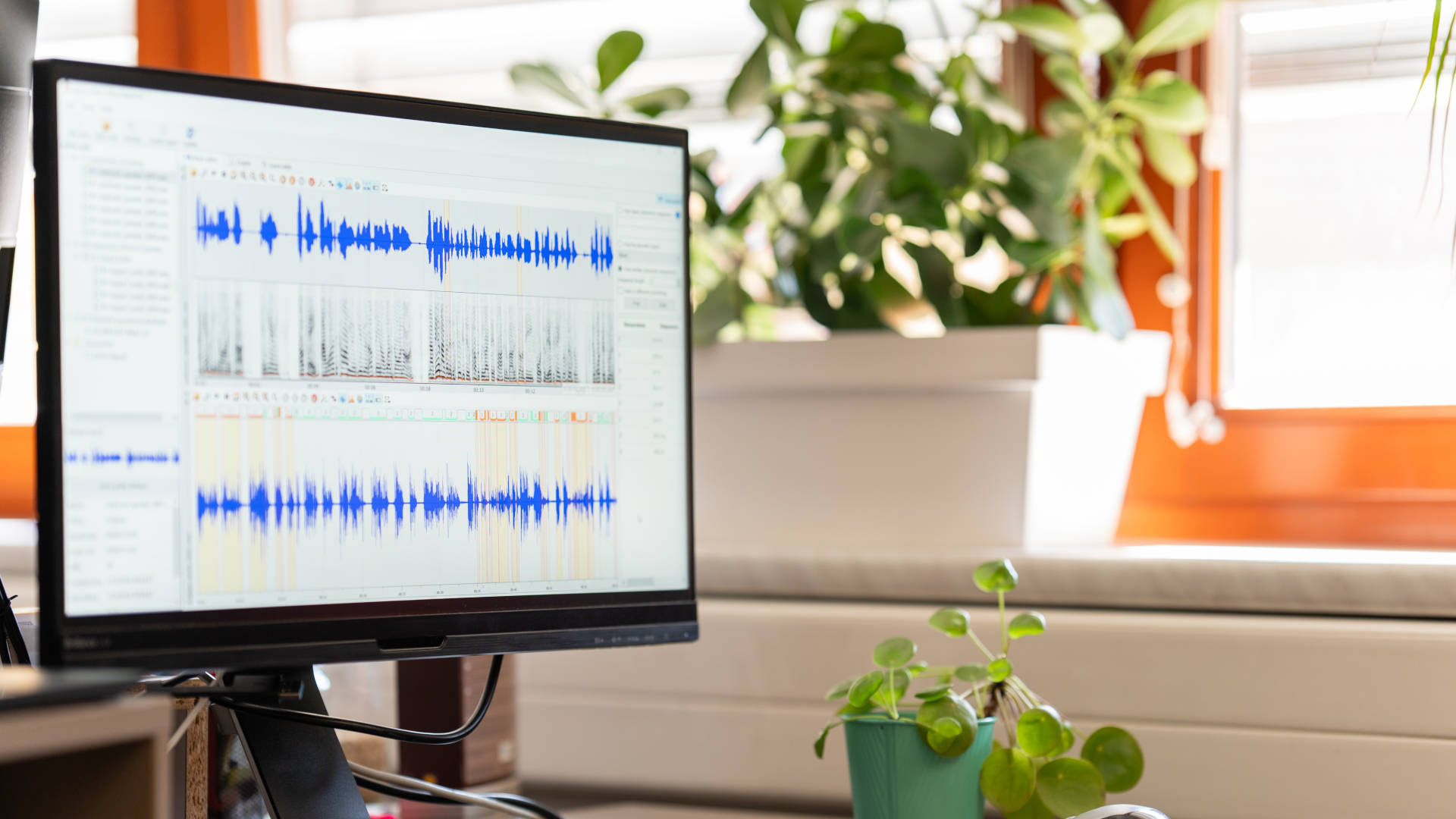How to Prevent Call Center Fraud with Biometric Voice Recognition

August 25, 2022
By Pavel Jiřík in Blog
According to Neustar’s report for 2021, contact center fraud increased by 40% compared to 2020. In the same report, 58% of respondents reported an increase in the use of call spoofing to impersonate customers, and 50% observed an increase in fraudsters using virtual call services to attack.
Considering the technology that fraudsters have access to, it should come as no surprise that launching multiple attacks or hiding their actual phone numbers isn’t the slightest problem. And worse, fraudsters are really good at convincing other people to share sensitive data with them or do as they are asked.
Is there a way in which you could predict an imminent attack and stop the criminals in their tracks? Well, if you ask biometric voice recognition tools to identify callers for you while they are on the line, you can. This would even come with the added benefit of shortening the verification time for your real customers and freeing up agents from having to ask callers multiple questions.
Let’s look at three scenarios where biometric voice recognition could help you and your staff keep criminals away from your customer database.
Scenario 1 - a Fraudster Impersonating a Customer
An agent takes a seemingly regular call from someone introducing themselves as a customer. The caller claims they have forgotten their login details or PIN for their credit card or mobile banking app.
Of course, they tried to restore their credentials through the website, but “something went wrong,” and they are worried they might accidentally lock their account for good. Or they have changed their mobile device and phone number, so all verification messages get sent to the “old and inactive number,” and they “don’t understand” how to change it themselves.
Given how many different passwords and PIN codes we have to remember nowadays and how easy it is to change a phone, that is probably one of the most common types of calls that an agent receives. But before they change the customer’s data as requested, the agent needs to make sure they are talking with the right person. This is usually done by asking a few security questions.
If the caller can answer all of them without hesitation, that means it’s the actual customer, right? Unfortunately, not necessarily. Fraudsters nowadays are masters of coercing people into sharing information such as their ID and social security numbers or answers to set security questions and then using these to pose as legitimate customers.
That’s why several companies now insist on the customer being present in person with their ID whenever they want to change their account data. But while this method might work well when it comes to boosting security, it definitely doesn’t make the customer experience a breeze. Especially if they live away from the nearest office or branch of the organization or bank.
Using voice biometrics as an additional method for verifying customers can simultaneously solve those two problems - enhancing your internal security and improving the customer experience.
How Can Biometric Voice Recognition Be Useful Here?
Voice biometrics solutions identify customers based on the unique characteristics of their voice. Since the human voice consists of over 100 unique physical traits, a voice sample is just as reliable as a verification method as a fingerprint or an eye scan.
And while for us it might be very hard (if not impossible) to notice all of those unique traits when someone speaks, biometric solutions powered with artificial intelligence can do so with ease. What’s more, they only need a few seconds to match a caller with their customer profile stored in a company’s database.
Every time someone calls your support line, the voice biometric platform compares the voice on the line with a voiceprint (a mathematical representation of the customer’s voice that was created during the first call) stored in your database. Once it finds a match, the voice biometrics system tells the agent that the caller has been verified successfully.
But if the caller introduces themselves as a customer and they don’t pass the verification process, your agents will be alerted to a suspicious caller on the line.
The best part is that thanks to passive voice biometric recognition, callers don’t have to remember any passwords or key phrases. Saying “Good evening” and explaining the reason for calling will be enough for the system to authenticate the caller. This is incredibly convenient for genuine customers since verification will only take a few seconds instead of a minute or two.
For criminals, on the other hand, voice verification instead of a knowledge-based process is a pretty big hurdle to pass. While they can easily steal customers’ personal information, speaking to a voice biometrics system can easily blow their cover. As such, there’s a good chance a fraudster won’t even try.
If you are worried that hackers might try to attack your database and steal the voice samples inside it, rest assured that they aren’t stored as recordings but as mathematical patterns that describe the voice characteristics to the AI. That means there’s no way in which the samples could be reused or recreated for criminal purposes, even if a criminal did gain access to them (as unlikely as it is).
Scenario 2 - a Fraudster Calling Using Multiple Identities
With the tools they have now, creating multiple fake identities isn’t the slightest problem for criminals. By combining one or more pieces of actual personal data with phony information, they can create an entirely new identity.
So, how can you catch someone who doesn’t actually exist? That’s an arduous task. In New York, tracing a number of fake identities to 43-year-old Adam Arena and his co-conspirators took prosecutors over two years, with Arena being charged in fall 2020. The vast majority of the 108 charges were related to Arena taking large loans he didn’t intend to pay back and bilking government programs designed for people who lost their businesses due to the pandemic.
Combining real Social Security numbers with fake names, addresses, ID numbers, and phone numbers was enough for Arena and his co-conspirators to defraud several banks for $1 million and the Paycheck Protection Program for $954,000.
Telco companies also face a lot of trouble from people who, for example, sign up for the most expensive mobile plan to get the latest device and then disappear without a trace after they receive the phone.
So-called SIM swap fraud is another major problem when scammers use fake IDs to access a legitimate subscriber's SIM card. They then use this card to read messages, authenticate transactions, make online purchases, or run up huge costs in the legitimate subscriber's name.
How Can Biometric Voice Recognition Be Useful Here?
For your agents, realizing that the ten new “customers” who signed up for the Telco brand’s latest offer are one and the same person is nearly impossible. That is unless the fraudster accidentally blows their own cover or raises the agent's suspicions in some way. But for artificial intelligence? It’s a piece of cake.
Remember how we said that the main task of voice biometrics is to match a caller on the line with the right customer profile? Such systems can do exactly the same with fraudsters. During each call, the platform can compare the voice on the line to that of blacklisted or “suspicious” callers.
If the software finds a match, it will immediately highlight this as such - even if the caller uses a completely different name, ID number, or even tries to change their accent. The most sophisticated voice biometric systems can verify a person’s identity even if they speak a different language than the one recorded in their voiceprint!
There’s one more way in which modern voice biometrics can be useful when dealing with these types of fraudsters, even if they aren’t yet in the database. Since the system scans and records the voice of every caller, it will quickly notice if the voice of a "different customer" matches that of a previous caller.
In this case, it will automatically mark the caller as suspicious and a potential fraudster and alert your agents whenever this person tries to call you again.
Scenario 3 - an Unauthorized Person Pretending to be an Employee
Now for something a bit different - preventing unauthorized people like family members or flatmates from accessing the platform and talking with customers. Back when most of us worked from an office building, this wasn’t a problem because the agent’s computer was inside the building. It’s not like anyone could come inside, answer an incoming call, and pretend to be an employee.
With remote work, things are a little different now. There could be kids, parents, or partners nearby and flatmates or neighbors coming round to visit. If you leave your computer unlocked, there’s also a risk that someone might accidentally (or willingly) answer an incoming call or open the customer database.
Okay, a five-year-old son answering a call from a customer might sound pretty unlikely, but it’s still better to secure your remote work computer before these things happen. No one wants to explain such an incident to their boss, right?
How Can Biometric Voice Recognition Be Useful Here?
Locking your computer with a password whenever you leave, even for a moment, and using strong passwords for any work-related programs and data are necessary when working remotely. However, voice biometrics can also be used to secure agents; computers through remote identity verification.
When your agents answer a call or join a conference, their voice will be compared with the stored voiceprint in the database. If there’s a match, they will be allowed to speak to the customer or join the meeting.
If not, the biometrics solution will block access to the call and customer data. As an added bonus, voice biometrics can identify agents virtually on any device they use for handling calls (whether it’s a work laptop, home PC, or mobile phone).
As such, using voice verification is an ideal way to ensure agents can answer calls and access your customer database while working remotely, without worrying about data security or customer service levels being at risk because of other people nearby.
Conclusion
Call center fraud is a widespread problem and one that, unfortunately, we can’t yet solve for good. Especially since fraudsters keep finding new methods to bypass security barriers and get their hands on customers' data.
To protect your customer database and business from cyber criminals, you can’t rely solely on using knowledge-based authentication to verify customers. Criminals don’t usually have any problem with obtaining this information, whereas obtaining their victim’s voiceprint or mimicking it well enough to fool the biometric verification is a far more complicated task.
So hard, in fact, that criminals usually won’t bother. That’s why more and more organizations are turning to voice biometrics for effective fraud protection, enhancing their customer experience, and boosting their call center efficiency.
Why spend a minute or two authenticating a single customer if your agents only have to spend only a few seconds on it and also immediately see that they have a suspicious caller on the line?
Wouldn’t that help your businesses save significant costs related to fraud performed over the phone and prevent various forms of Telco fraud from harming your company?


